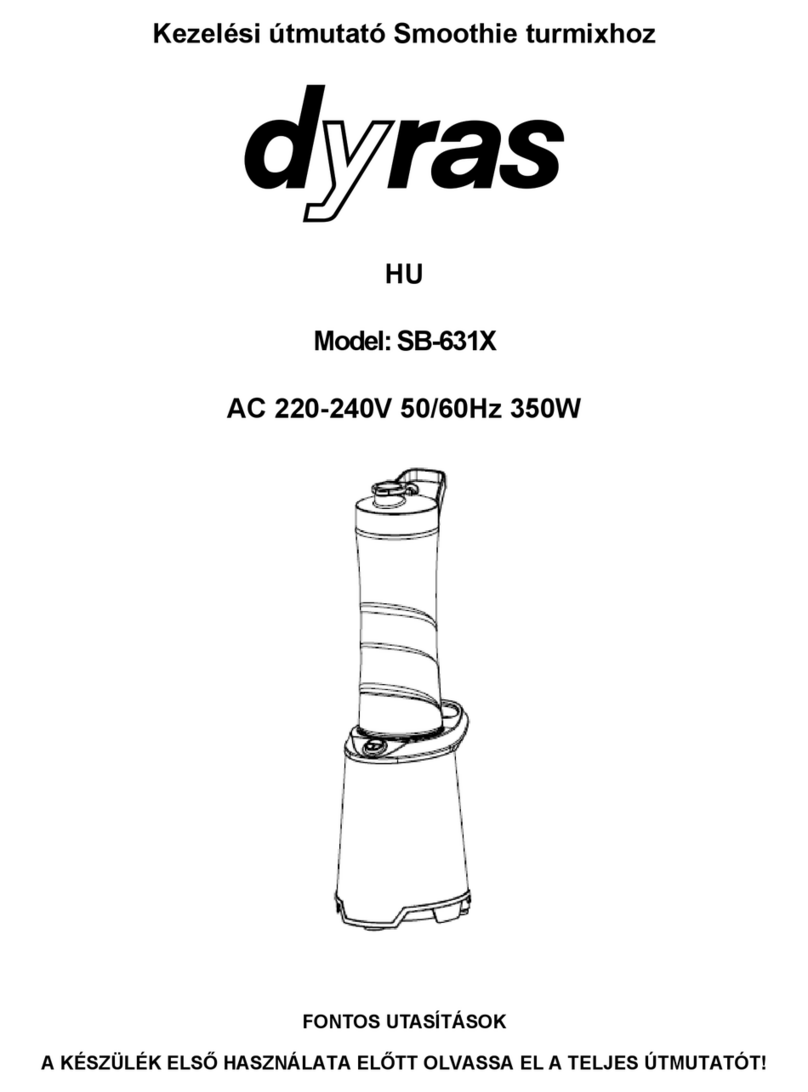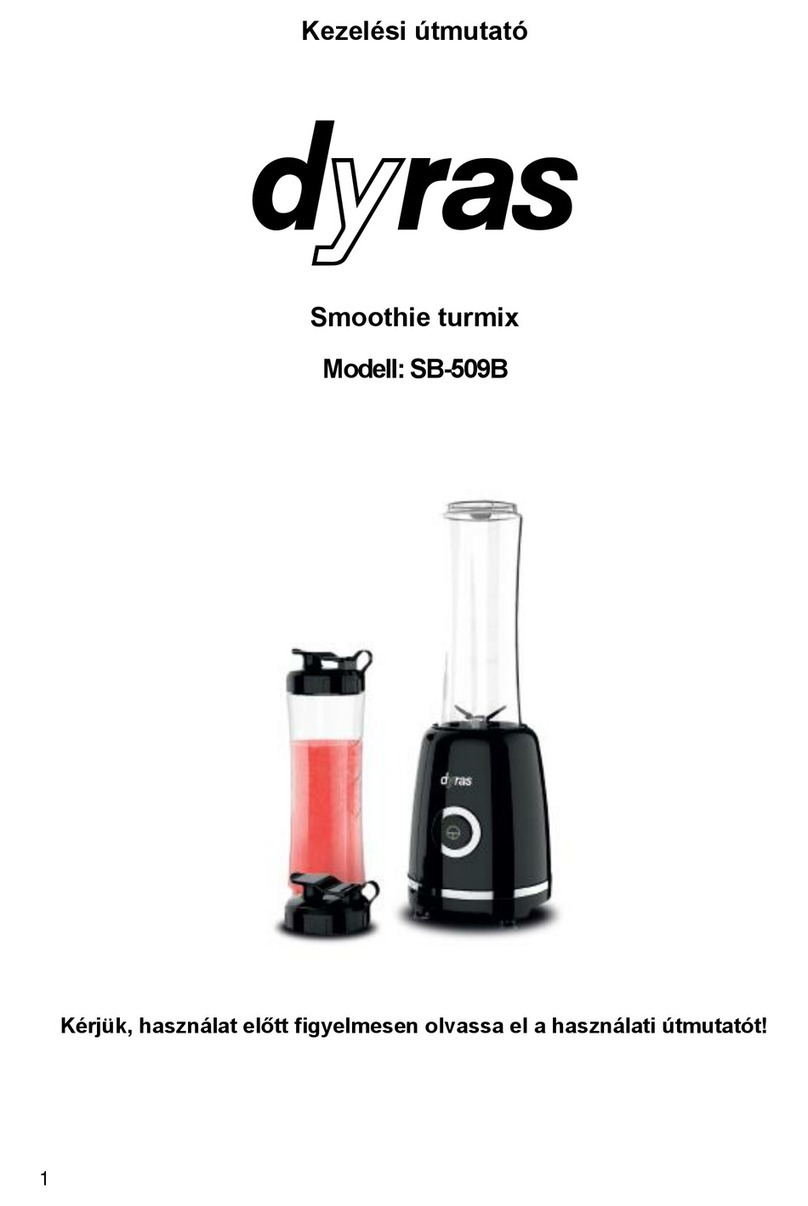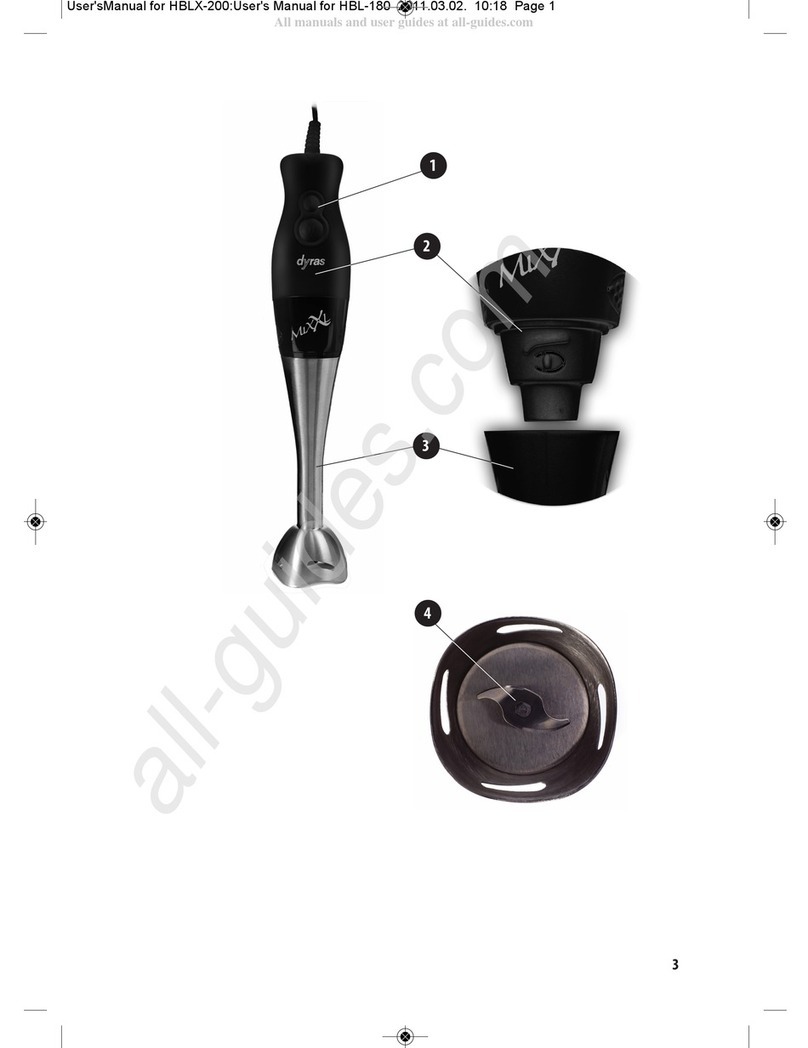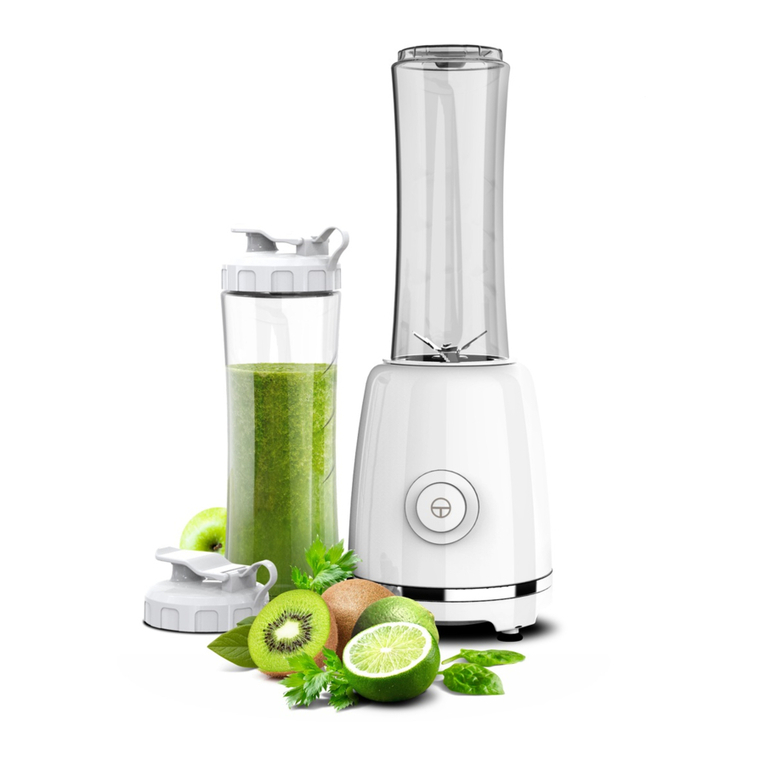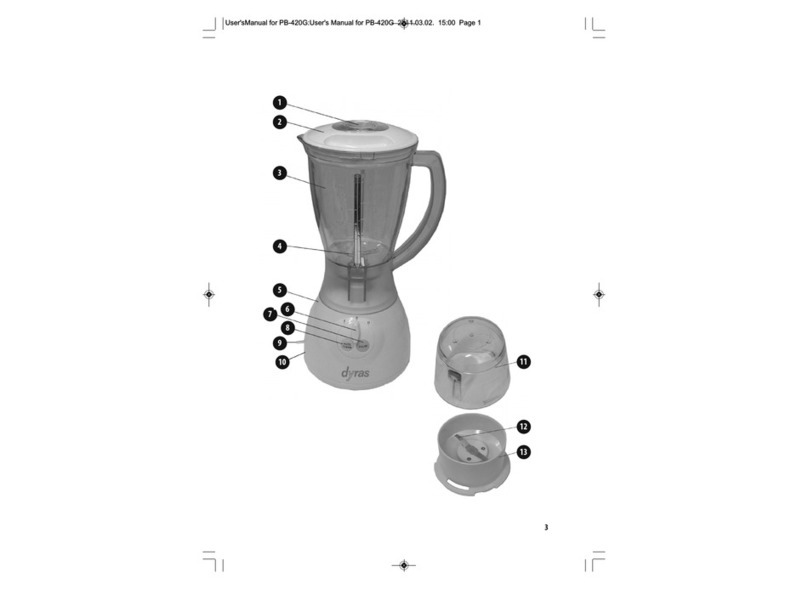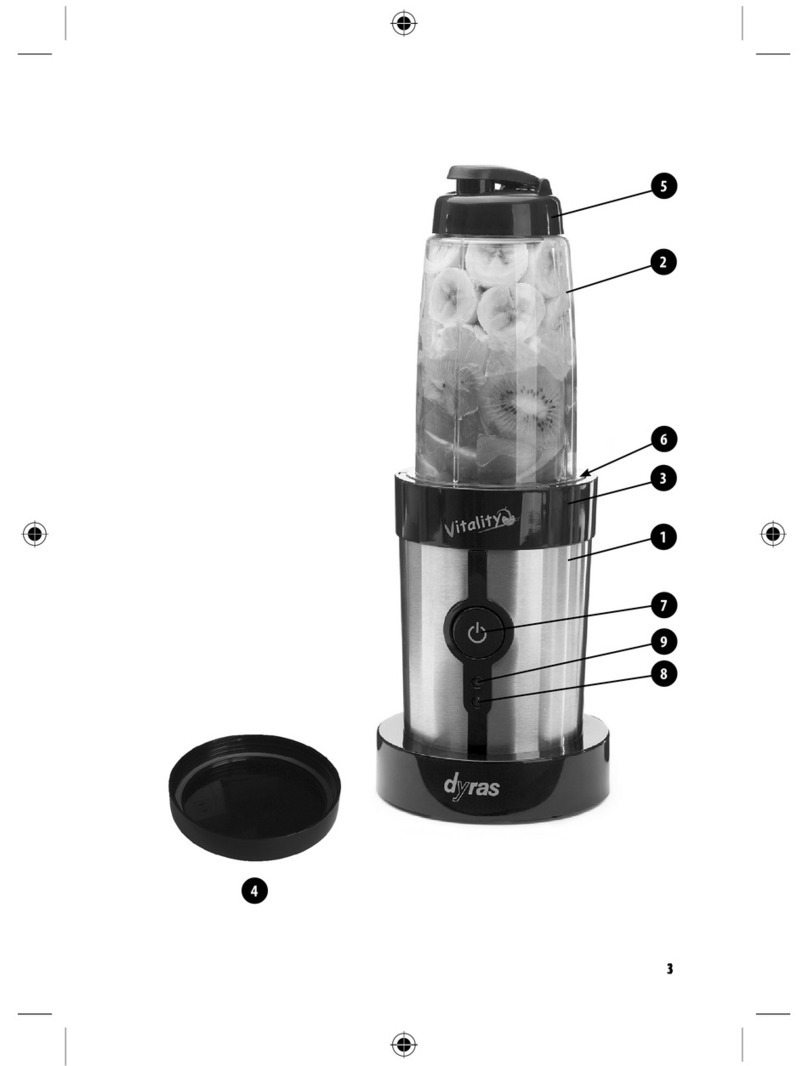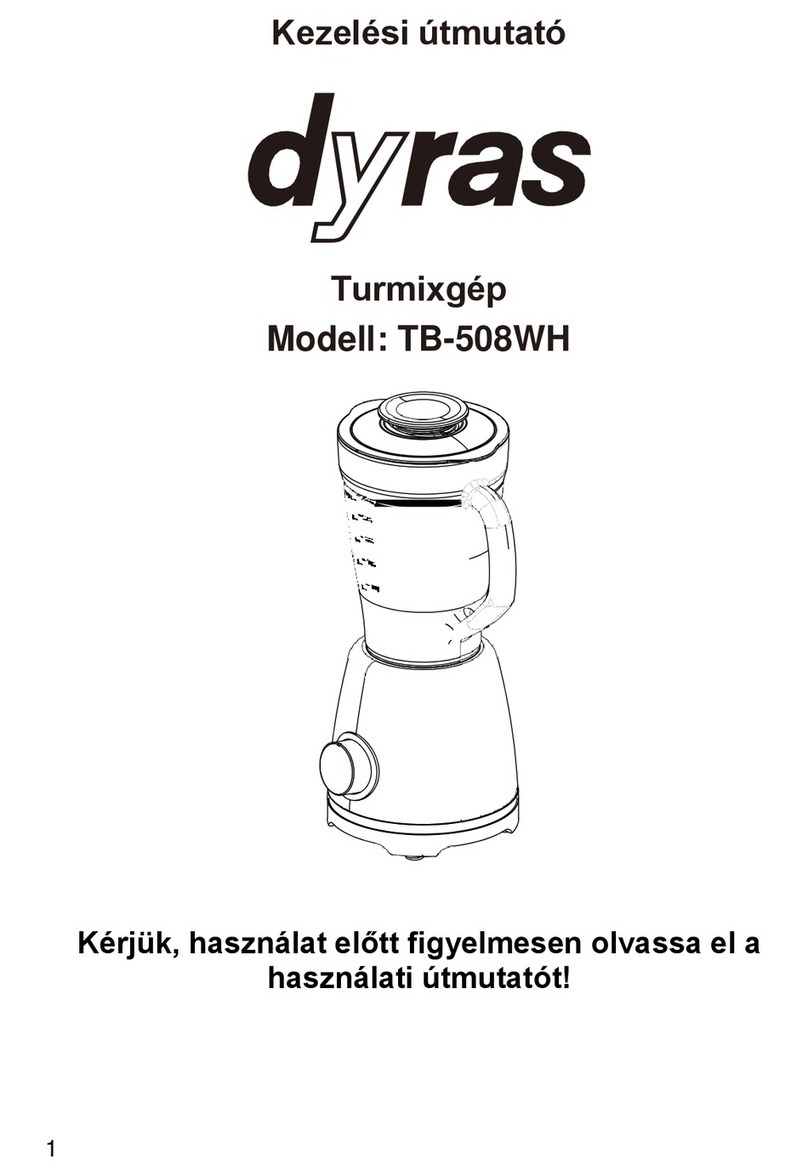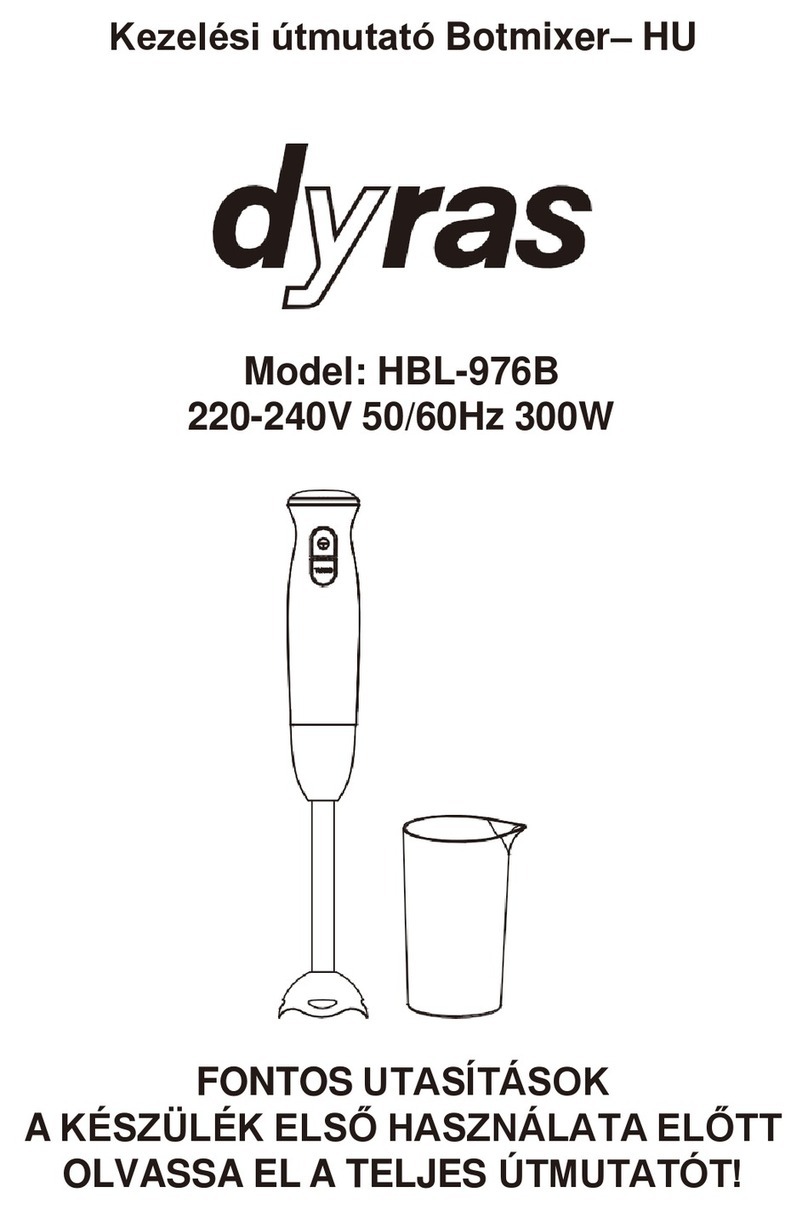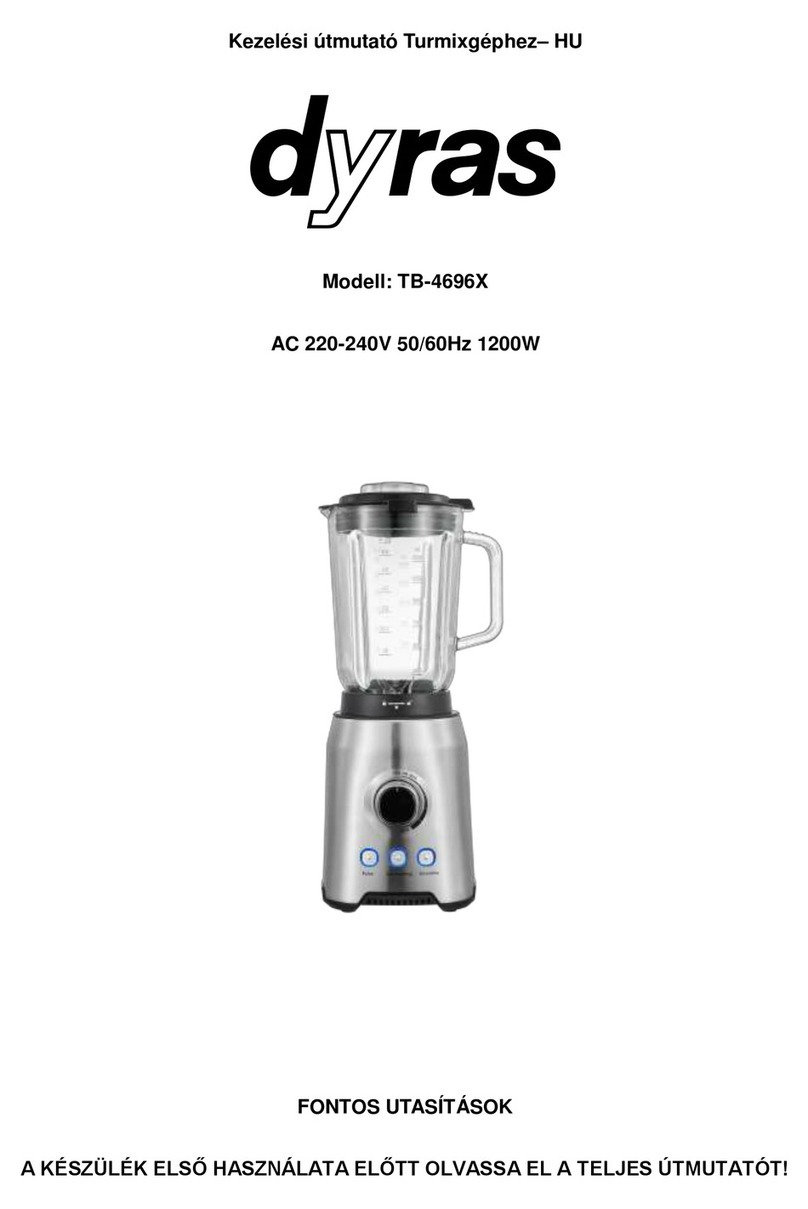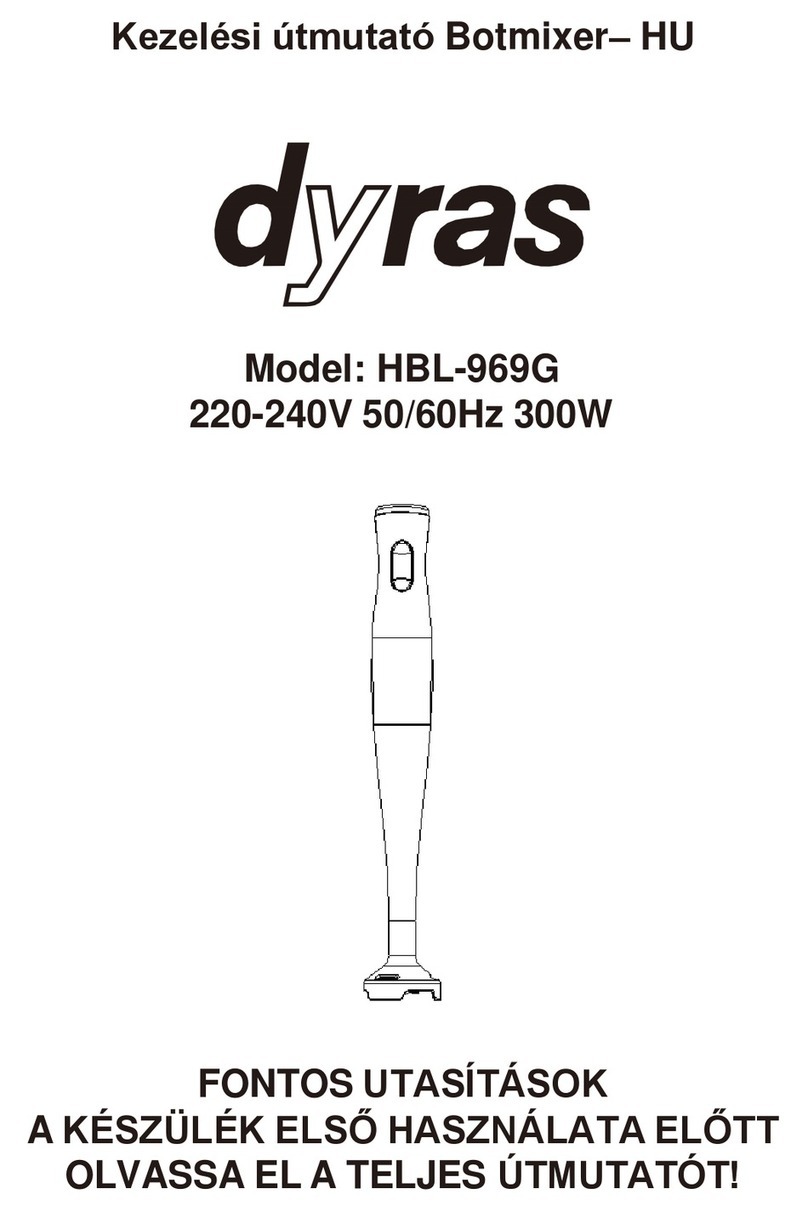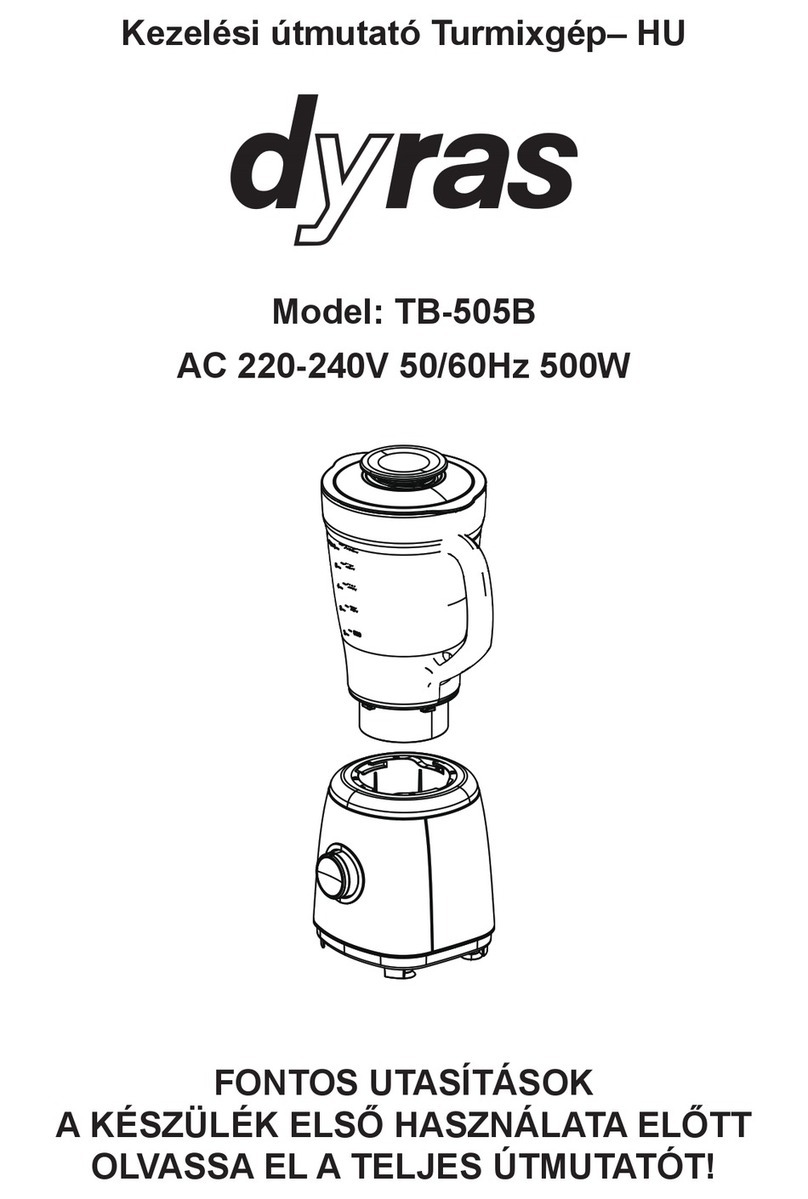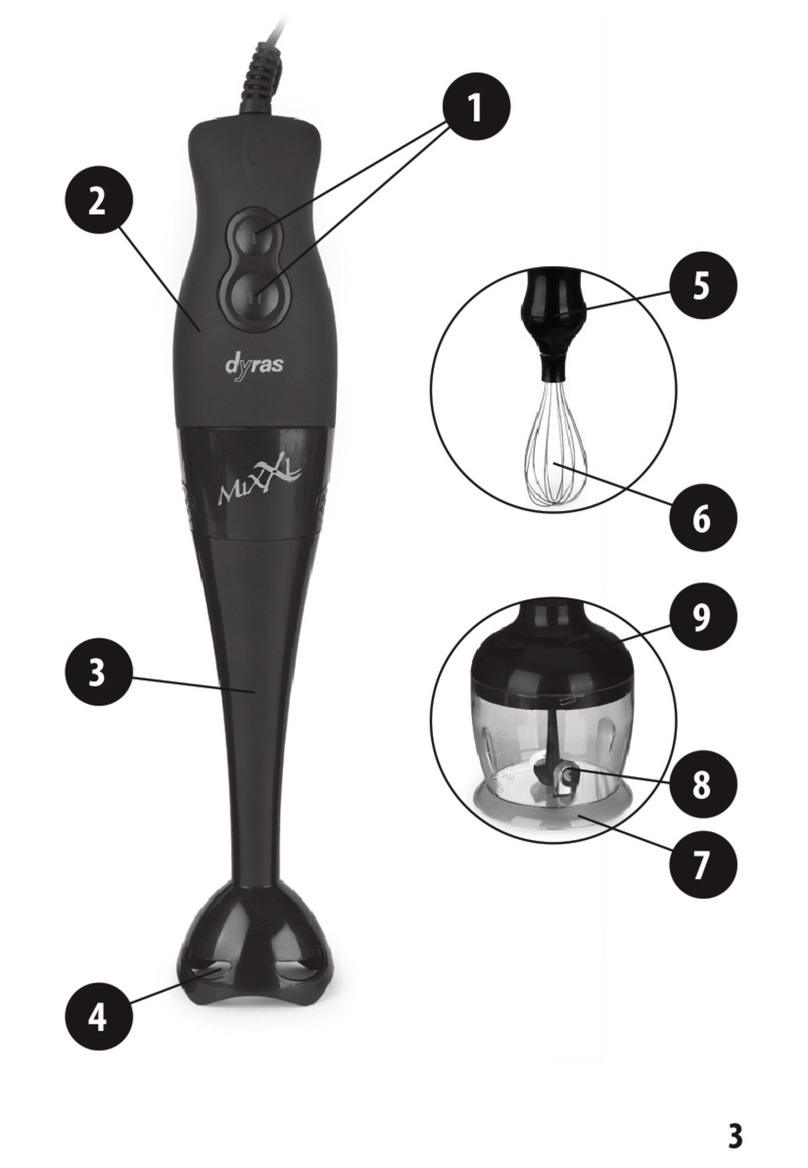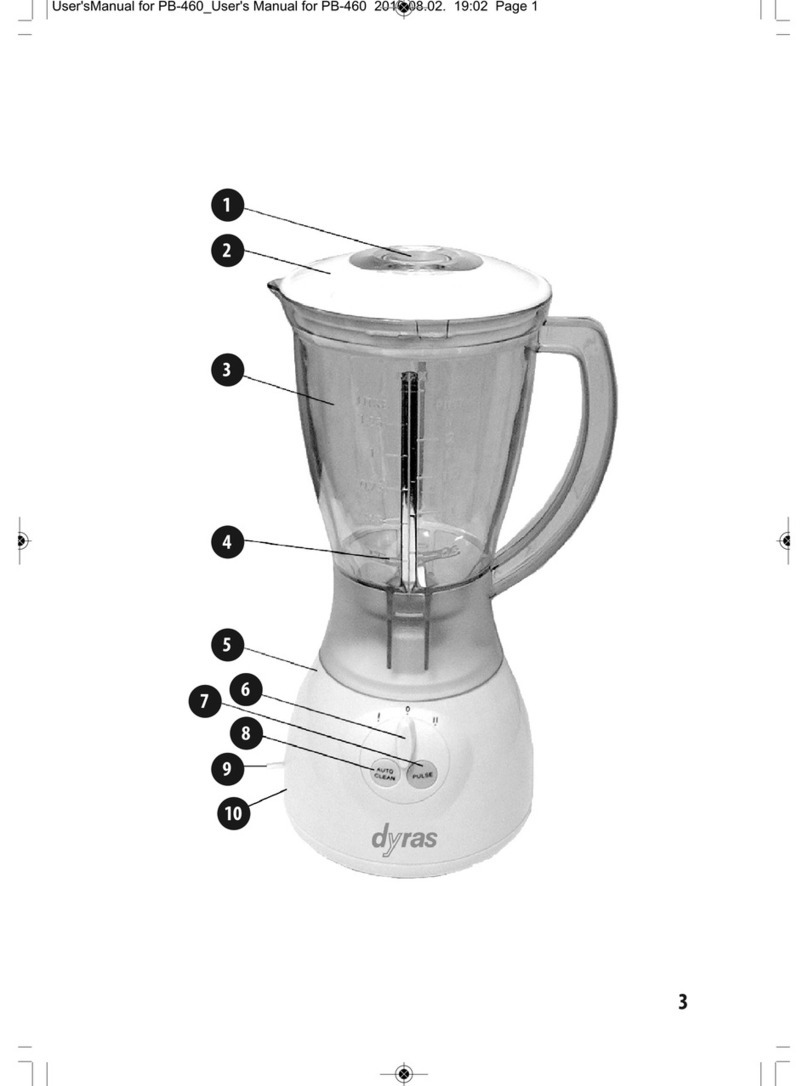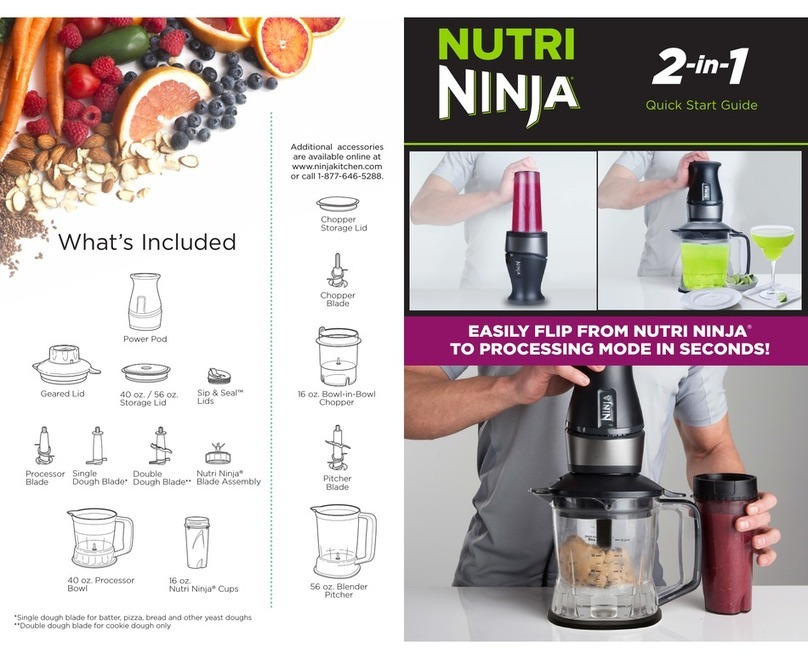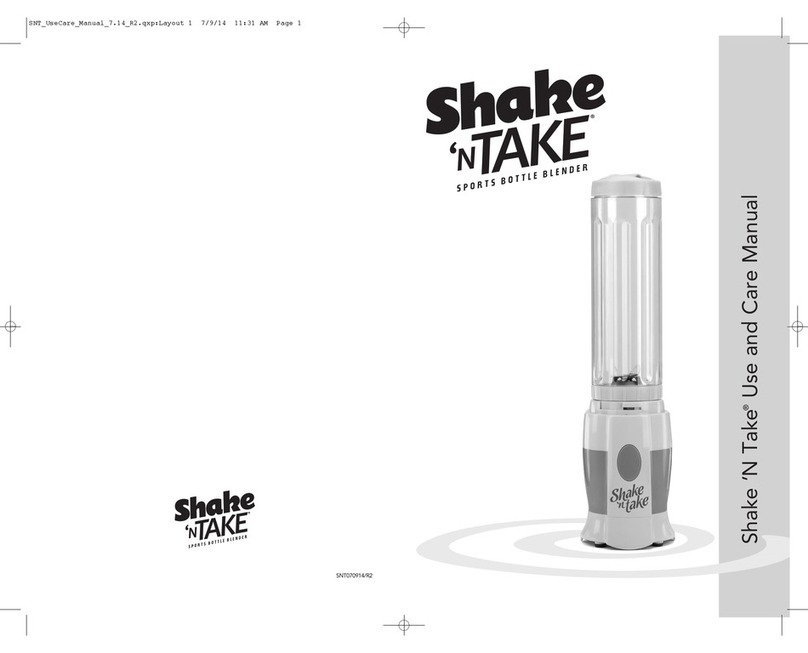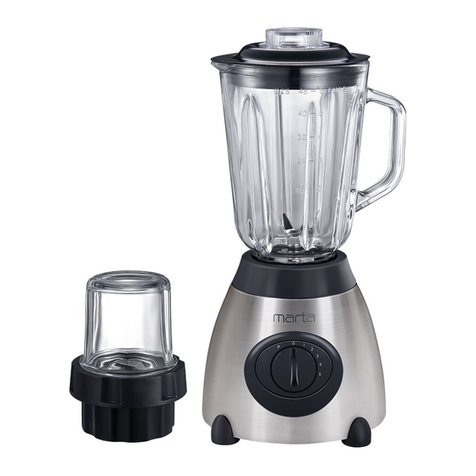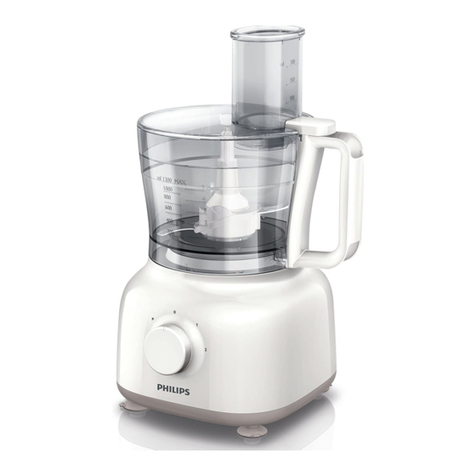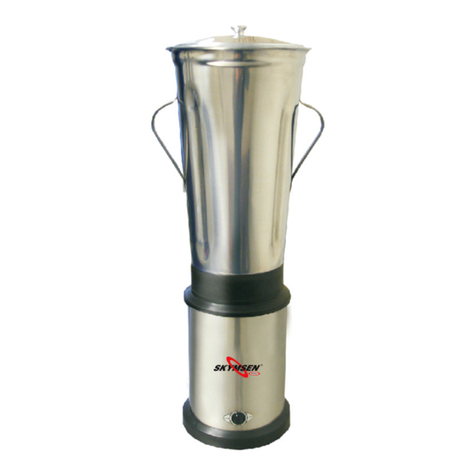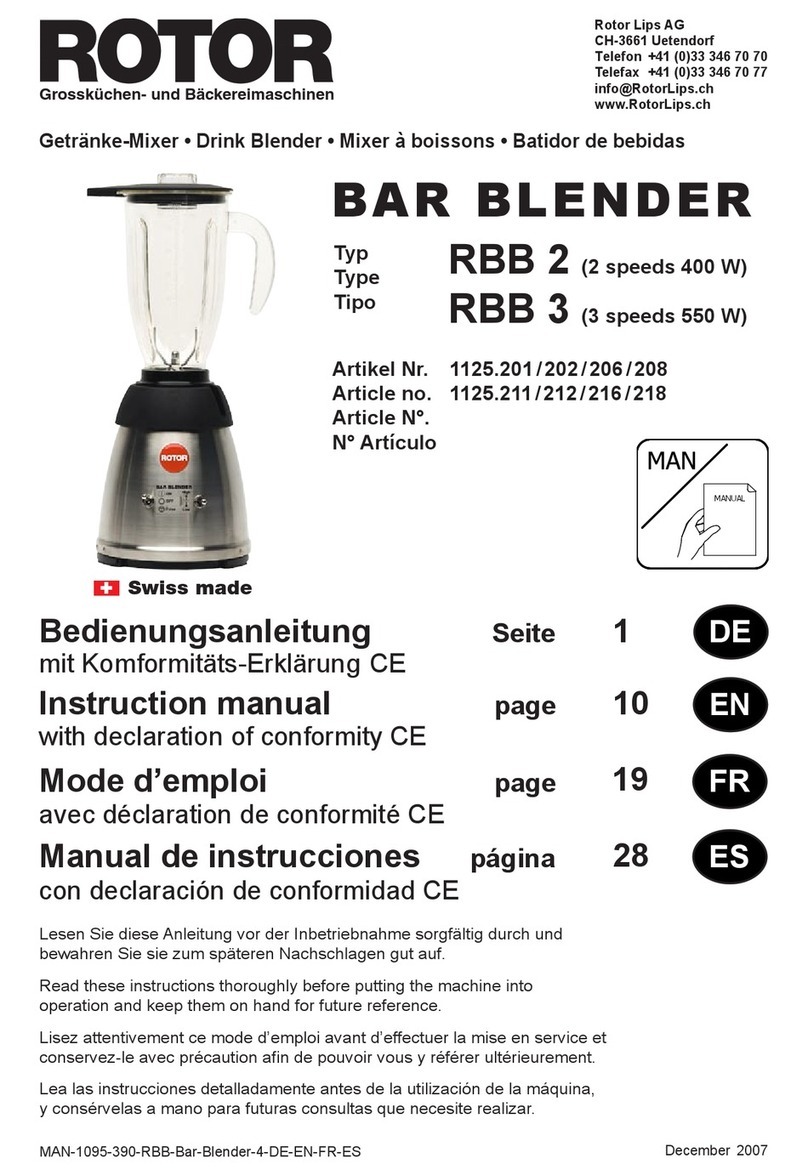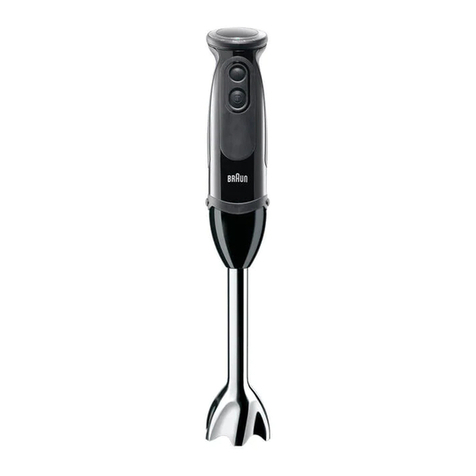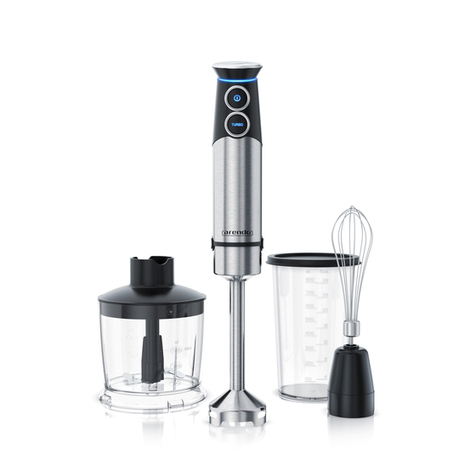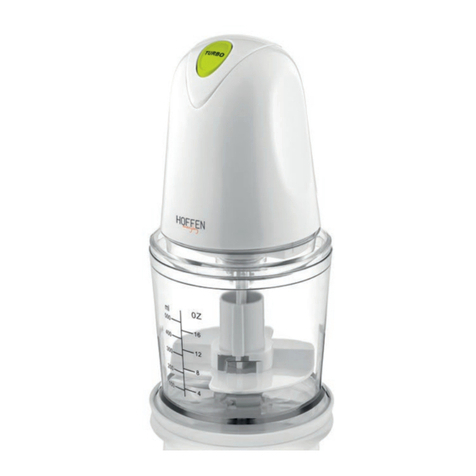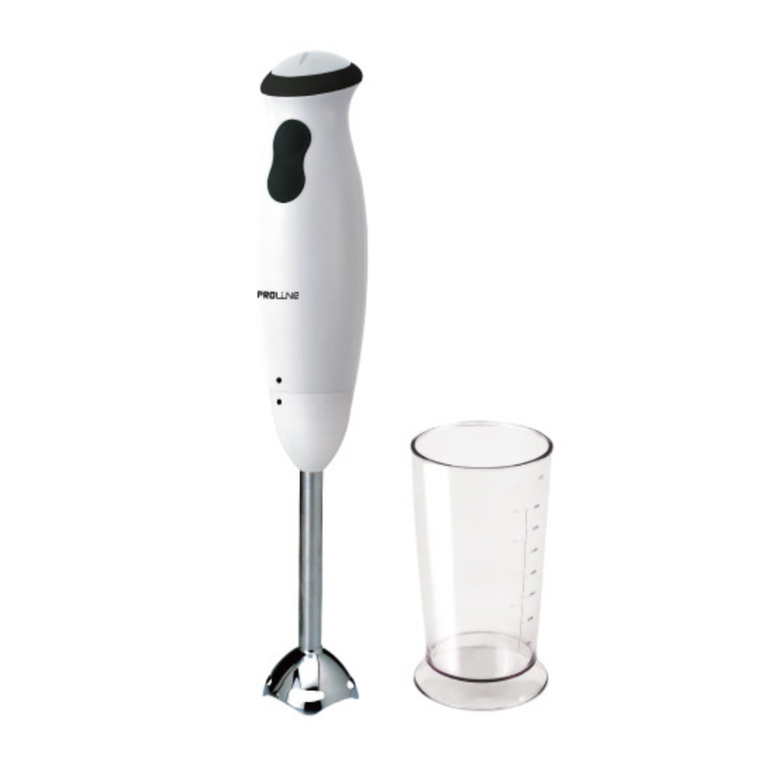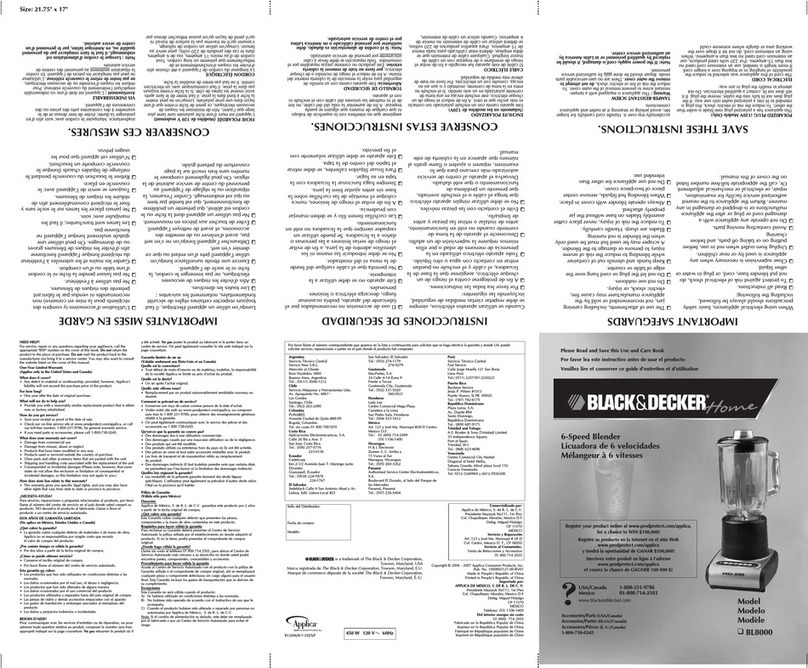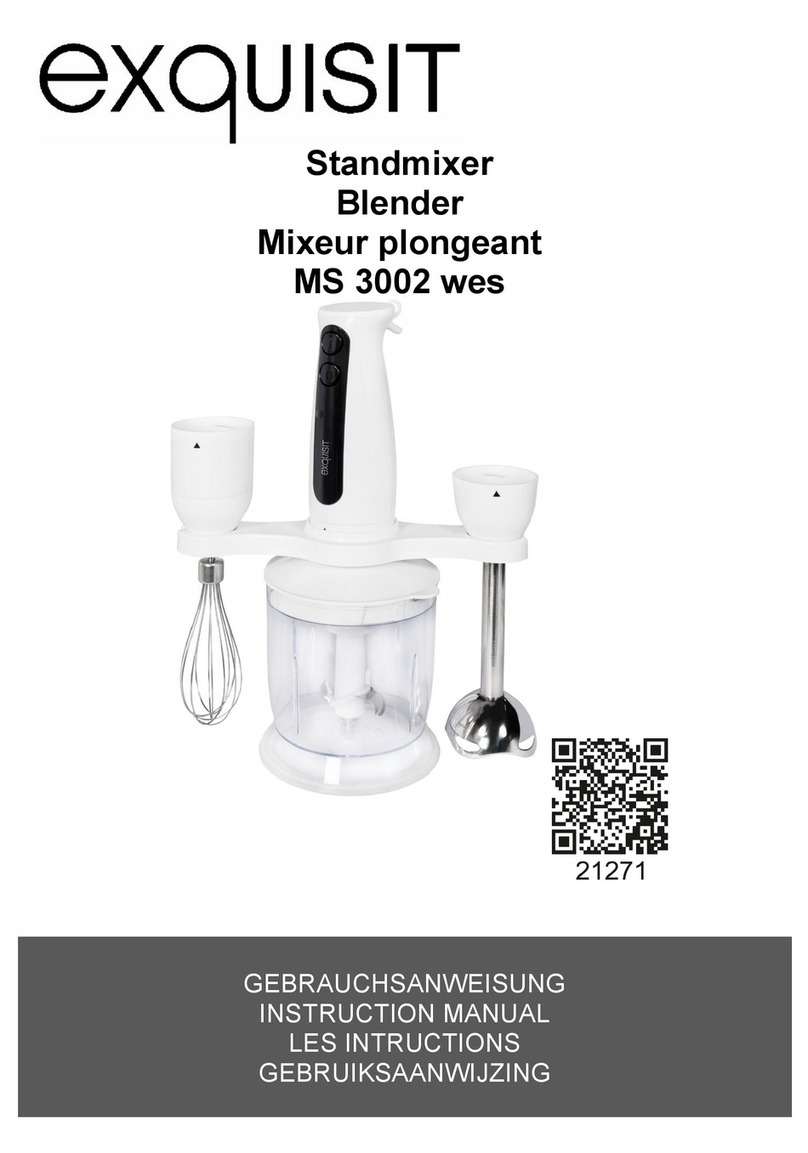• Do not lengthen or alter the mains cable of the appliance. f you need a longer cable between the appliance
and the wall socket, you should buy a standard extension cord from an electrical dealer. When using an
extension cord, be careful not to create a hazard that you or someone else could trip over.
• Warning! Disassembling the appliance, opening the casing or attempting to repair it at home are forbidden -
non compliance with this instruction might result in serious accidents. The inside of the appliance does not
contain any parts that can be repaired at home or used for any other purpose. Never use the appliance with
damaged power cable or connector, if operation is erratic or if it was dropped and is otherwise damaged. f
the appliance has become faulty for any reason or moisture has got inside the casing, take it to an authorised
service engineer for checking or repair. Only skilled experts are authorised to repair the appliance. The
manufacturer is not liable for damages if home repair has been attempted or the instructions in the operating
manual have not been complied with.
Dear Customer,
All electrical and mechanical equipment needs to be cared for appropriately. It’s important to note
that using or storing the appliance in certain conditions may adversely aect its lifespan and
functionality. Always protect the appliance from the conditions listed below.
Using or storing the appliance in a wet, humid or damp environment can cause:
- deterioration and premature aging of the cover and electric insulation of the appliance,
- premature wearing and aging of the plastic and rubber components,
- rust and corrosion aecting electrical components and metal parts.
Using the appliance in a dusty environment or in the kitchen (where the air may be contaminated
with vapours from cooking oil or grease) can cause:
- greasy dust coatings on the mechanical and electrical elements and the casing of the appliance,
which could result in electrical contact failure or even complete breakdown, and could also
damage the plastic and rubber elements.
The eects of direct sunlight on the appliance can include:
- accelerated deterioration of the appliance casing and its plastic and rubber components,
damage to strength and other structural features. The appliance's surface may become porous
and fragile, which may result in a safety risk.
Continuous heavy duty use may cause:
- premature structural wear and tear and premature aging of the motor due to extensive use of
the appliance, resulting from wear and tear and overheating due to continuous use.
Storing the appliance in cold or frosty environment may cause:
- damage to the plastic and rubber components; if they become fragile,
this may result in a safety risk.
- oxidation resulting from condensation, and corrosion of the metal components.
PB-460G
6
